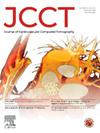机器学习和计算流体动力学推导的FFRCT在冠状动脉疾病患者中具有相当的诊断性能;系统回顾和荟萃分析。
IF 5.5
2区 医学
Q1 CARDIAC & CARDIOVASCULAR SYSTEMS
引用次数: 0
摘要
背景:作为一种新的无创诊断技术,ct衍生血流储备(FFRCT)已被用于识别血流动力学显著的冠状动脉狭窄。FFRCT可以使用计算流体动力学(CFD)或机器学习(ML)方法计算。假设基于ml的FFRCT (FFRCTML)与基于cfd的FFRCT (FFRCTCFD)具有相当的诊断性能。我们使用有创FFR作为参考测试来评估FFRCTML与FFRCTCFD的诊断性能。方法:检索PubMed、Cochrane Library、EMBASE、WOS和Scopus,检索2024年3月前发表的文章。我们分析了FFRCTML与FFRCTCFD在患者和血管水平上的综合敏感性、特异性和诊断优势比(DOR)。我们生成了汇总的受试者工作特征曲线(SROC),然后计算曲线下面积(AUC)。结果:本荟萃分析包括23项报告FFRCTCFD诊断性能的研究和18项报告FFRCTML诊断性能的研究。在FFRCTCFD组中,分析了2501例患者和3764个血管或病变。在FFRCTML组中,分析了1323例患者和4194个血管或病变。我们的结果显示,在每例患者水平上,FFRCTCFD和FFRCTML具有相当的合并特异性(Z = -0.59, P = 0.55)和AUC (P = 0.5)。在每根血管水平,FFRCTCFD和FFRCTML也显示出相当的特异性(Z = 0.94, P = 0.34), DOR (Z = 0.7, P = 0.48)和AUC (P = 0.74)。然而,在患者(Z = -3.85, P = 0.0001)和血管(Z = -2.05, P = 0.04)水平上,FFRCTML的敏感性均明显低于FFRCTCFD。结论:FFRCTML技术在AUC和特异性方面与标准CFD方法相当。然而,它没有达到与FFRCTCFD相同的灵敏度水平。本文章由计算机程序翻译,如有差异,请以英文原文为准。

Machine learning and computational fluid dynamics derived FFRCT demonstrate comparable diagnostic performance in patients with coronary artery disease; A Systematic Review and Meta-Analysis
Background
As a new noninvasive diagnostic technique, computed tomography-derived fraction flow reserve (FFRCT) has been used to identify hemodynamically significant coronary artery stenosis. FFRCT can be calculated using computational fluid dynamics (CFD) or machine learning (ML) approaches. It was hypothesized that ML-based FFRCT (FFRCTML) has comparable diagnostic performance with CFD-based FFRCT (FFRCTCFD). We used invasive FFR as the reference test to evaluate the diagnostic performance of FFRCTML vs. FFRCTCFD.
Methods
We searched PubMed, Cochrane Library, EMBASE, WOS, and Scopus for articles published until March 2024. We analyzed the synthesized sensitivity, specificity, and diagnostic odds ratio (DOR) of FFRCTML vs FFRCTCFD at both the patient and vessel levels. We generated summary receiver operating characteristic curves (SROC) and then calculated the area under the curve (AUC).
Results
This meta-analysis included 23 studies reporting FFRCTCFD diagnostic performance and 18 studies reporting FFRCTML diagnostic performance. In the FFRCTCFD group, 2501 patients and 3764 vessels or lesions were analyzed. In the FFRCTML group, 1323 patients and 4194 vessels or lesions were analyzed. Our results showed that at the per-patient level, FFRCTCFD and FFRCTML had comparable pooled specificity (Z = −0.59, P = 0.55) and AUC (P = 0.5). At the per-vessel level, FFRCTCFD and FFRCTML also showed comparable specificity (Z = 0.94, P = 0.34), DOR (Z = 0.7, P = 0.48), and AUC (P = 0.74). However, the sensitivity of FFRCTML was significantly lower compared to FFRCTCFD at both patient (Z = −3.85, P = 0.0001) and vessel (Z = −2.05, P = 0.04) levels.
Conclusion
The FFRCTML technique was comparable to standard CFD approaches in terms of AUC and specificity. However, it did not achieve the same level of sensitivity as FFRCTCFD.
求助全文
通过发布文献求助,成功后即可免费获取论文全文。
去求助
来源期刊

Journal of Cardiovascular Computed Tomography
CARDIAC & CARDIOVASCULAR SYSTEMS-RADIOLOGY, NUCLEAR MEDICINE & MEDICAL IMAGING
CiteScore
7.50
自引率
14.80%
发文量
212
审稿时长
40 days
期刊介绍:
The Journal of Cardiovascular Computed Tomography is a unique peer-review journal that integrates the entire international cardiovascular CT community including cardiologist and radiologists, from basic to clinical academic researchers, to private practitioners, engineers, allied professionals, industry, and trainees, all of whom are vital and interdependent members of our cardiovascular imaging community across the world. The goal of the journal is to advance the field of cardiovascular CT as the leading cardiovascular CT journal, attracting seminal work in the field with rapid and timely dissemination in electronic and print media.
 求助内容:
求助内容: 应助结果提醒方式:
应助结果提醒方式:


